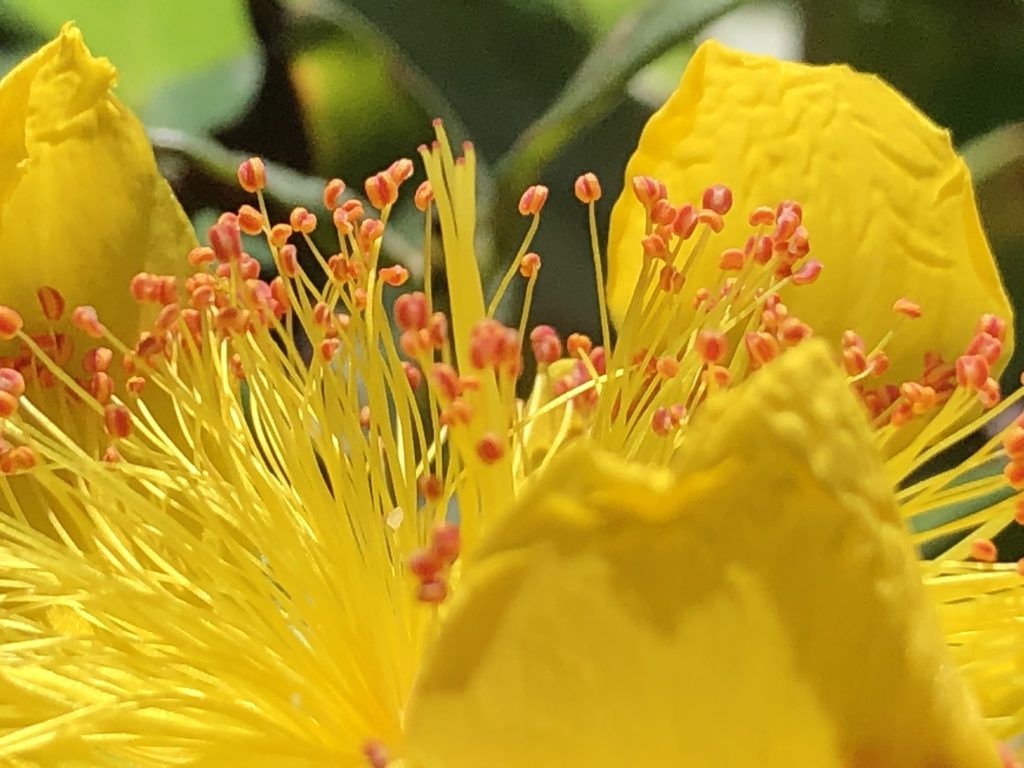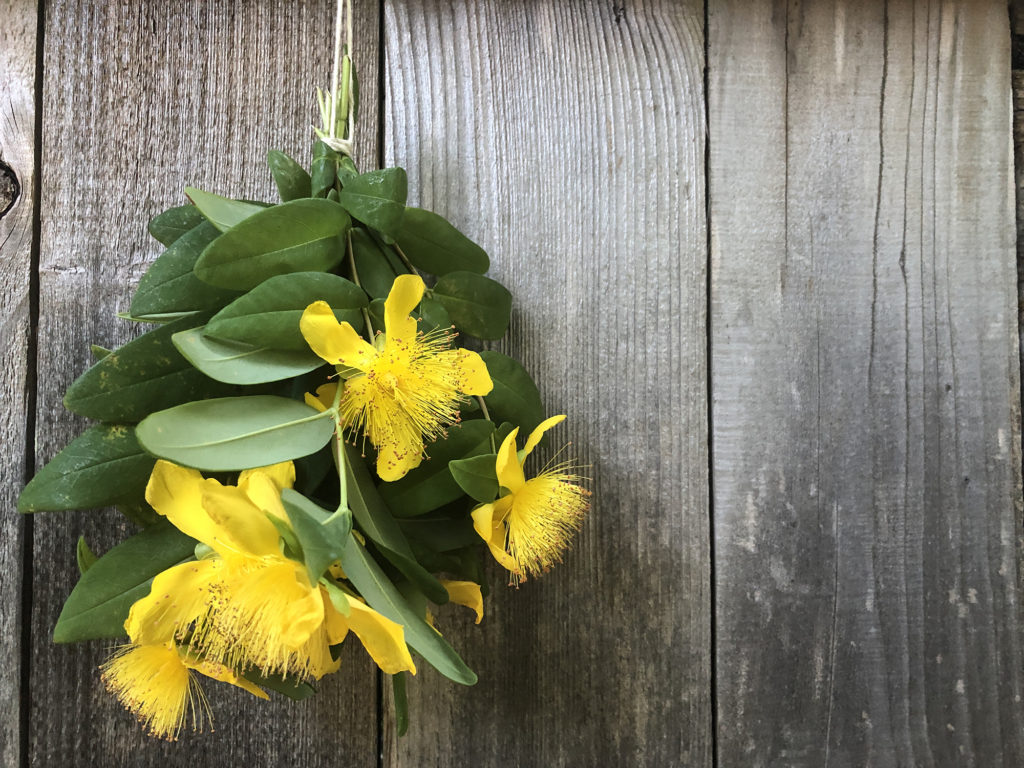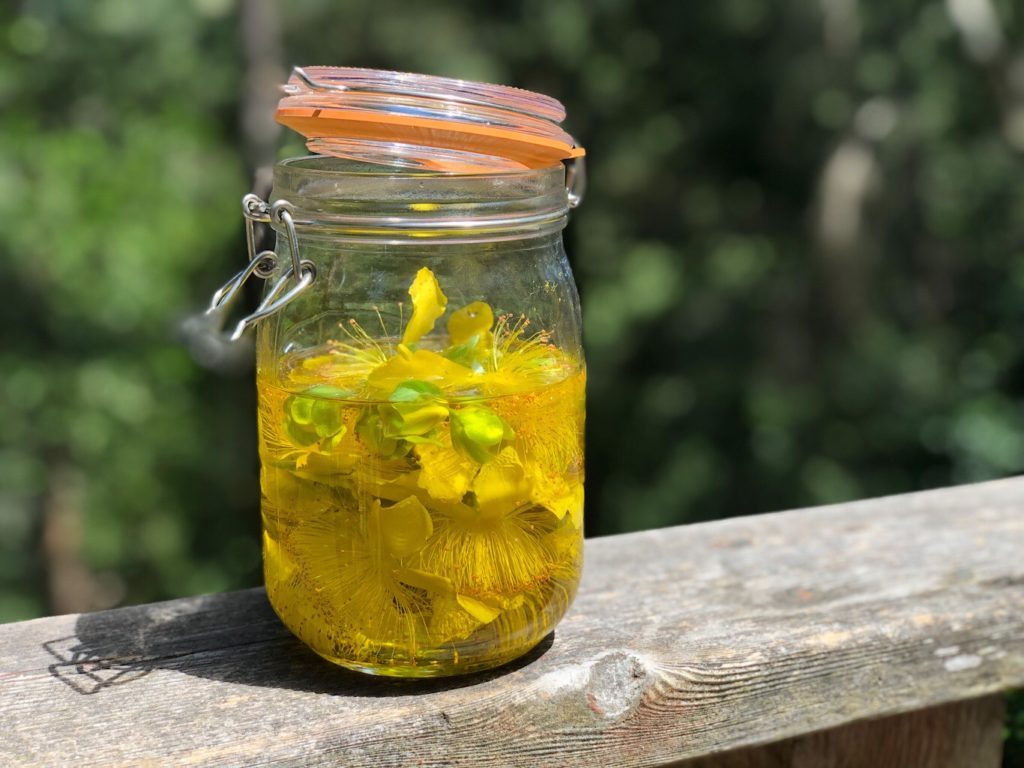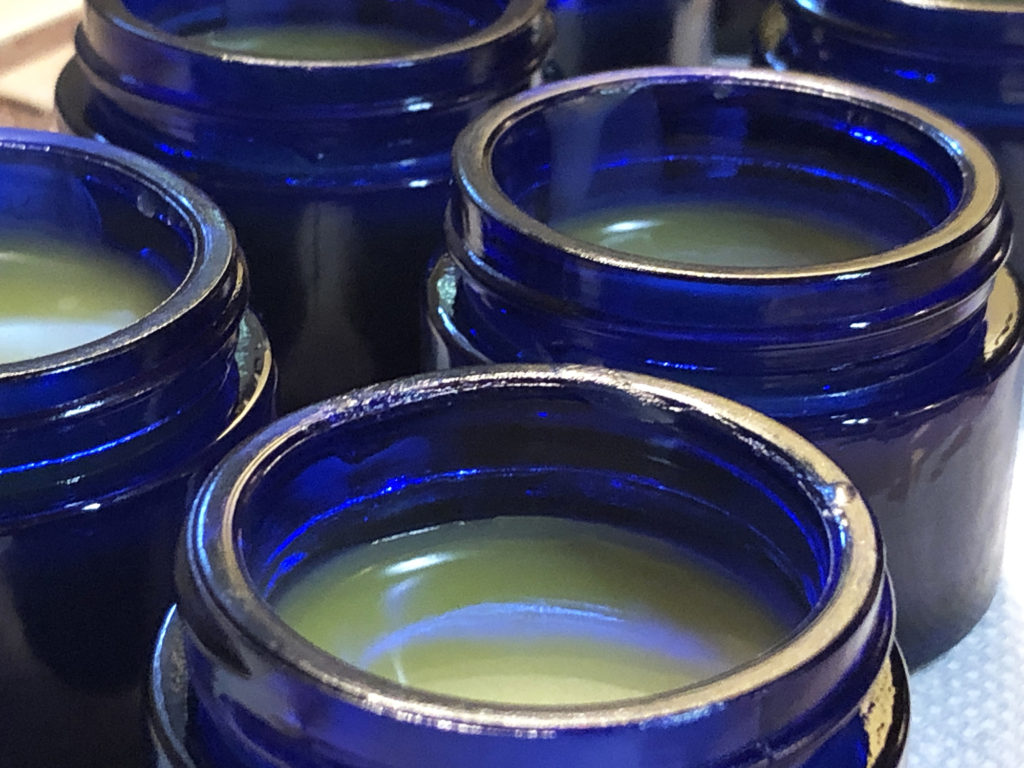
St John’s Wort or the greek Hypericum Perforayum which means “Over a spirit”.
Other common names are Goatweed, Klamath Weed, Tipton’s Weed and Rosin Rose. It is named after John the Baptist as it is harvested at midsummer on his Birthday. There are many mentions of the sun and the Solstic to St John’s Wort. As I look at and live with and learn to love this plant, I see why, when blooming they literally look like little half sun’s that the Bee’s buzz over to pollinate.
The plant itself has leaves directly across from each other and if held up to the light, you can see tiny holes or perforations in the leaves. When harvesting in the wild, I always keep in mind the Pollinators. You never want to take more than 1 to 7 in the wild. We have it growing in several places here on The Butterfly Hill, so I do take slightly more here on the hill. You want to allow the plant to flower before you harvest.
To test take a bud and press between your thumb and forefinger, if it turns red, then the plants are ready to harvest. St John’s Wort is one of the only herbs that doesn’t dry well. The research I’ve done suggests the best way to preserve it is to extract the properties out of the plant by soaking it in pure olive oil. (I do also harvest some by drying upside down as well.) Harvest the flowers and buds as well as some of the small new leaves. Place in a jar on the kitchen window sill and shake daily making sure that all plant matter is submerged in the oil. If the plants or flowers break the surface they can mold. After a few weeks, the oil will turn red. Then all the extraction is complete.


This is a picture of fresh blossoms, buds, and new growth leaves extracting in 100% organic olive oil for tinctures and salves.
The oil has many healing properties and is best know for helping with depression and skin ailments. The Analgesic properties (pain relief), as well as the anti-inflammatory properties, make this a favorite of many herbalists. It is known as good nighttime protection against nightmares and nite sweats. You can use the oil in a bath before bed. As well as a massage oil. Originally St John’s Wort was used for nerve pain. I will be making massage oils and a healing salve. Herbs can contraindicate with some medications. St John’s Wort can cause sun sensitivity in some people. If you are on any medications, check with your doctor before introducing any herbal treatments.

Making the salve was so much fun! I started with a 1 to 1 ratio… then refined my portions from there. I find that when in doubt, the 1 to 1 is a great place to start. I heated the St. John’s Wort Oil in a double boiler and put a jar in the top pot, and added beeswax. Melt till all is dissolved and pour into clean jars.
I have been using St. John’s Wort oil for a month now, every night. As it has been used for years as a nite time herb, I have used it. They say that it helps with setting down into a restful sleep. As well as having been used for centuries for nerve pain.
I massage it on the bottom of my feet and my hands. After working on the hill all day it feels so comforting and I feel like it really helps me to relax.
Many people have reported great relief with the St. John’s Wort products we made this year! I feel so good to help with their pain. One is even planting St. John’s Wort to harvest her own!
Join our community to gain access to these and other wonderful botanicals

